In May 2016, Bee and I spent three weeks in Greece, mostly visiting the Cyclades Islands on another Wilderness Travel adventure.
Before we joined the group, we had a couple of days in Athens on our own.
We explored the small streets of Plaka before ending in Monastiraki, which I remembered well from my first visit in 2009.

The is the daylight view. I had taken this night time view of people in front of the church back in 2009 – I was publishing smaller photos at the time.
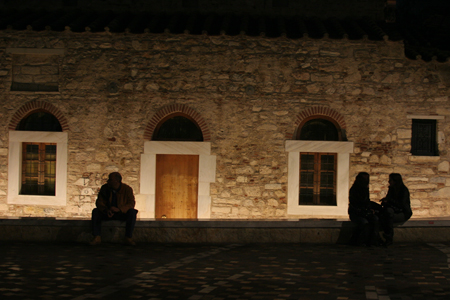
Another church is this one, the Church of Panaghia Kapnikarea, situated in the middle of the main street from Monastiraki to Syntagma Square. We were able to see it inside – by pure luck as we saw someone getting out and managed to convince the cleaning lady to let us in as well, for just a few minutes.
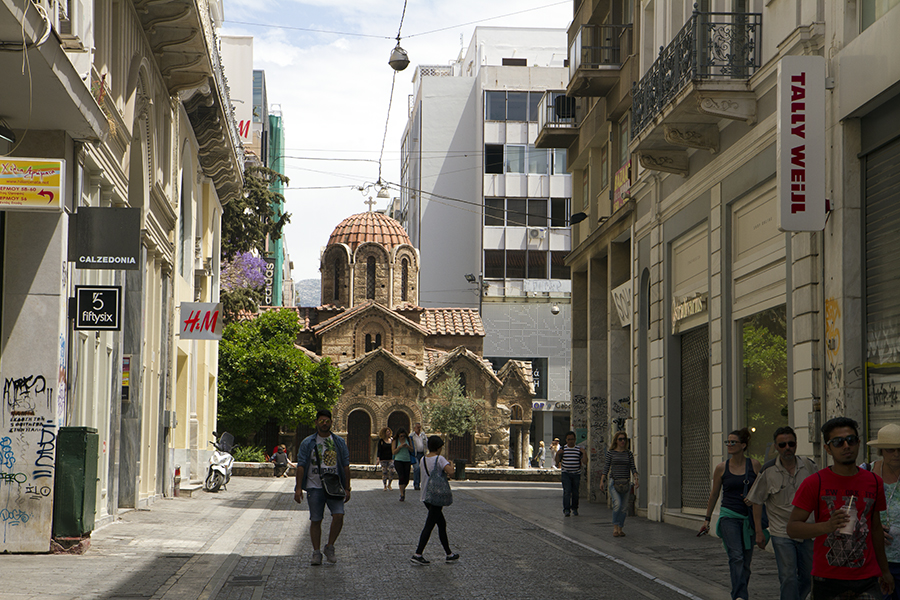
As if often the case in Athens, the church is a lot older then the neighborhood around it. It is thought to have been built in the 11th century, probably around 1050 (according to Wikipedia). It may have been part of a convent at some time.
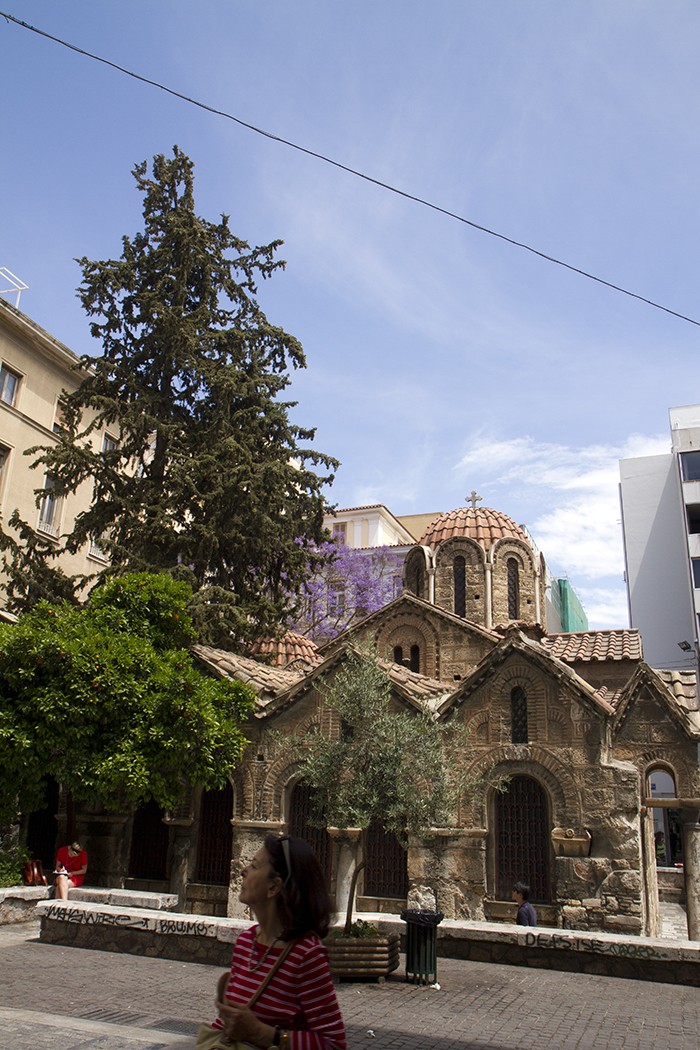
We spent the first night at the Hilton, and our view of the Parthenon and Acropolis was blocked by a construction crane. When we joined the tour group, we moved to a different hotel, much closer to the Acropolis and we had this great view f the Parthenon from our room.
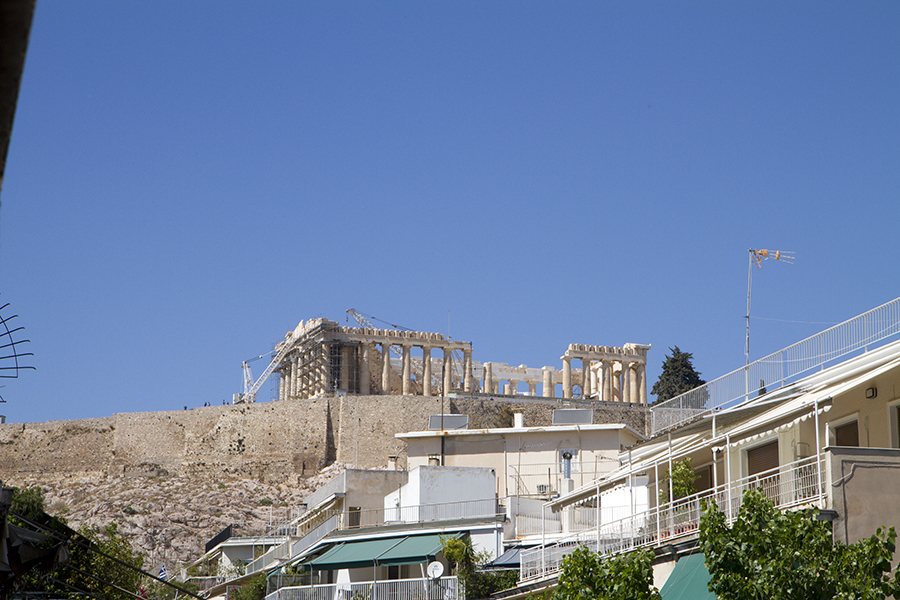
We went for another walk, as the weather continued to be great. This is the Roman Arch of Hadrian, yes the same Hadrian who built the wall in Scotland – he did get around even in those days.

The stunning Panatenaic Stadium, originally build in the 4th century BC for the Panataneic Games, which were a competitor to the Olympic Games back in ancient Greece. We will see more of this at the end of our trip.

On the way back, we ran into a green parrot up in a tree.
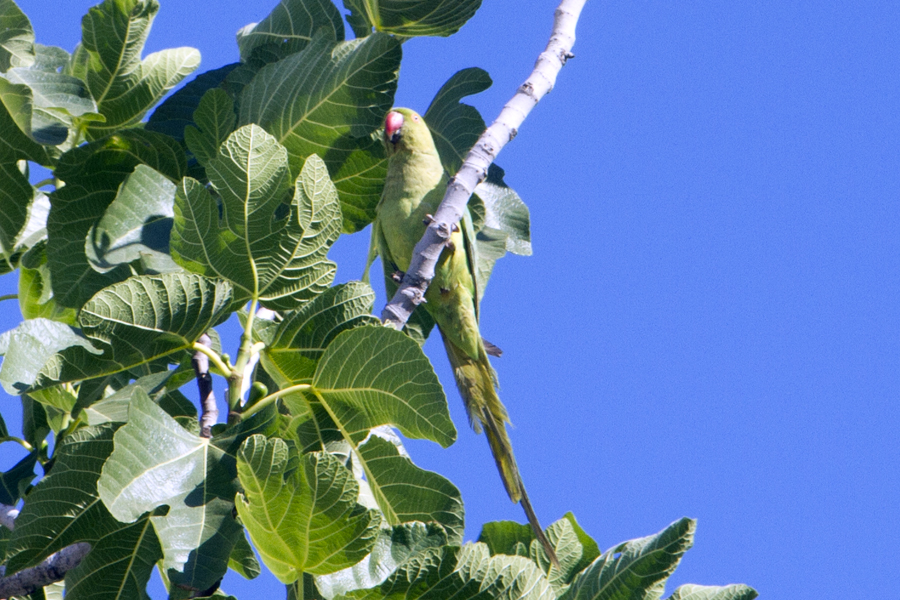
Our first dinner with our group on the roof of the hotel at sunset with a view of the Parthenon.
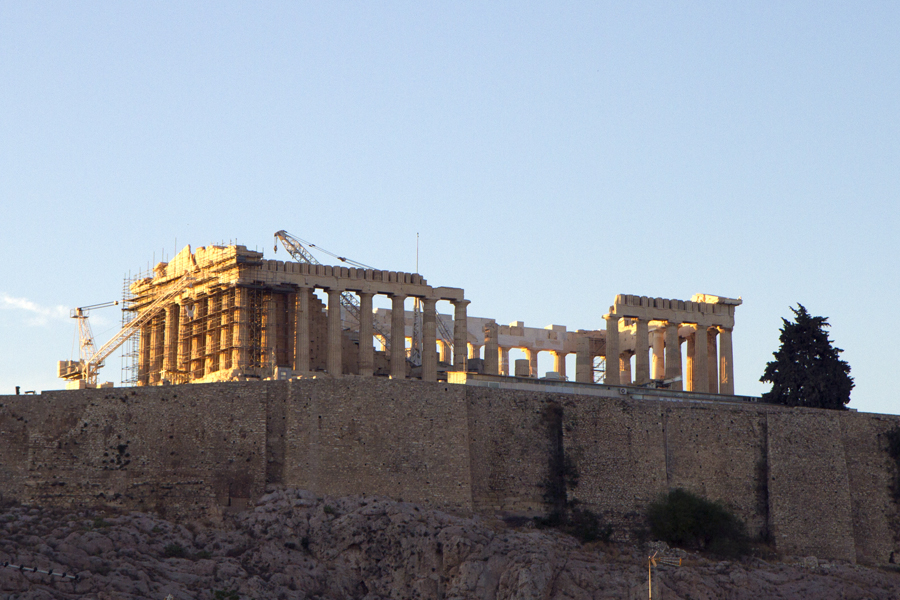
The next day, we had a guided tour of the Acropolis and the Acropolis Museum. The Parthenon has not changed a lot since I first came.
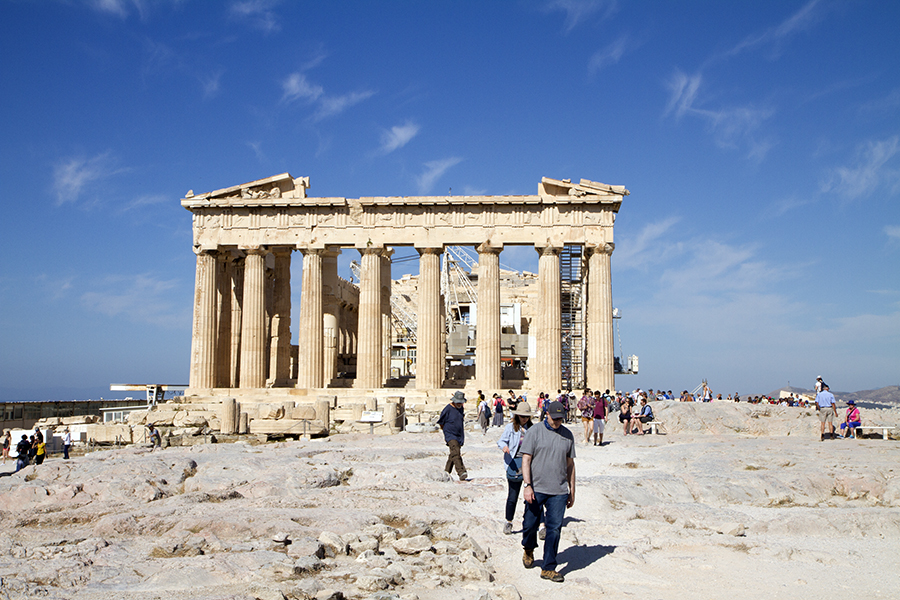
Here is the view that I had in 2009
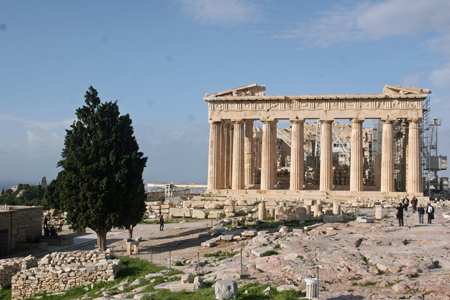
Restoration has been going on for over 10 years and no one is quite sure when it will be done…
The sides of the Parthenon are not quite straight. They have a slight curve that is much more appealing to the eye and provides a better perspective than an absolutely straight construction – and the Greeks already knew about this back then.
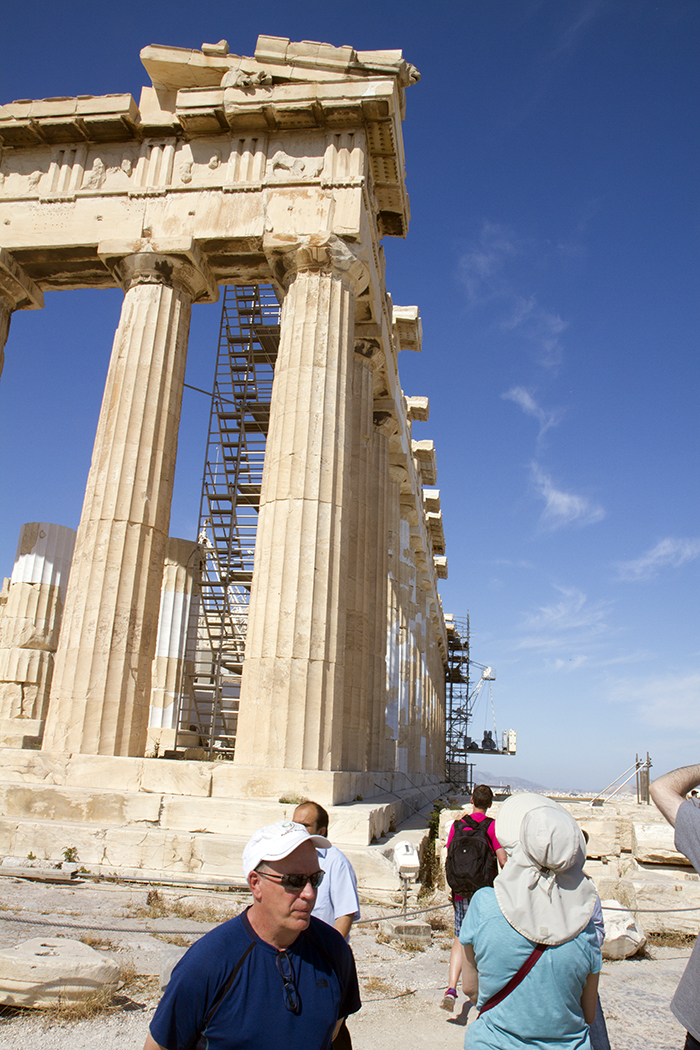
The very famous Porch of the Caryatids on the side of the Erechtheion. The statues are now copies with the original being protected in the Acropolis Museum.
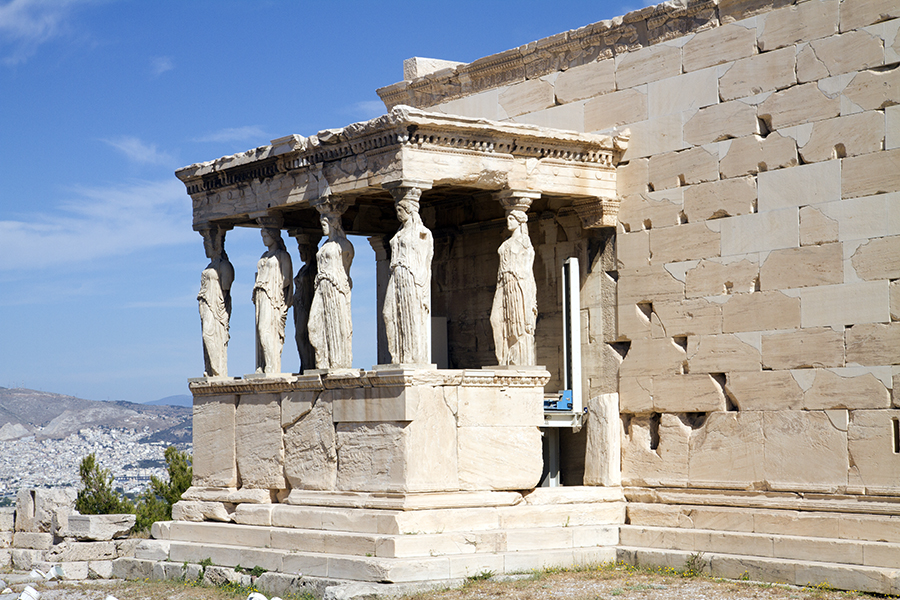
Oustide the Acropolis, we found an unexpected visitor.
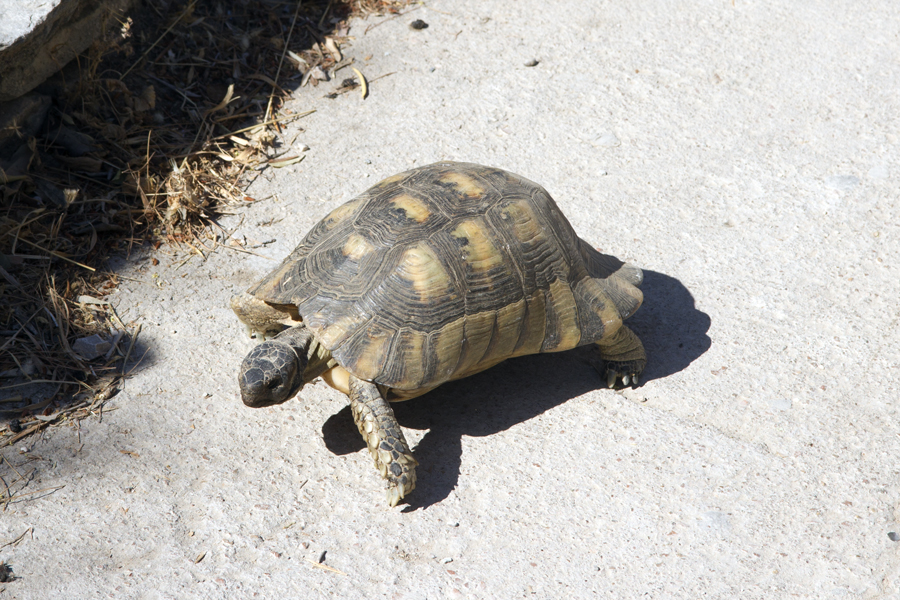
Here is one of the original Caryatids in the museum. It is very nice to be able to get closer to them and you can see these much better than the ones in the porch today.
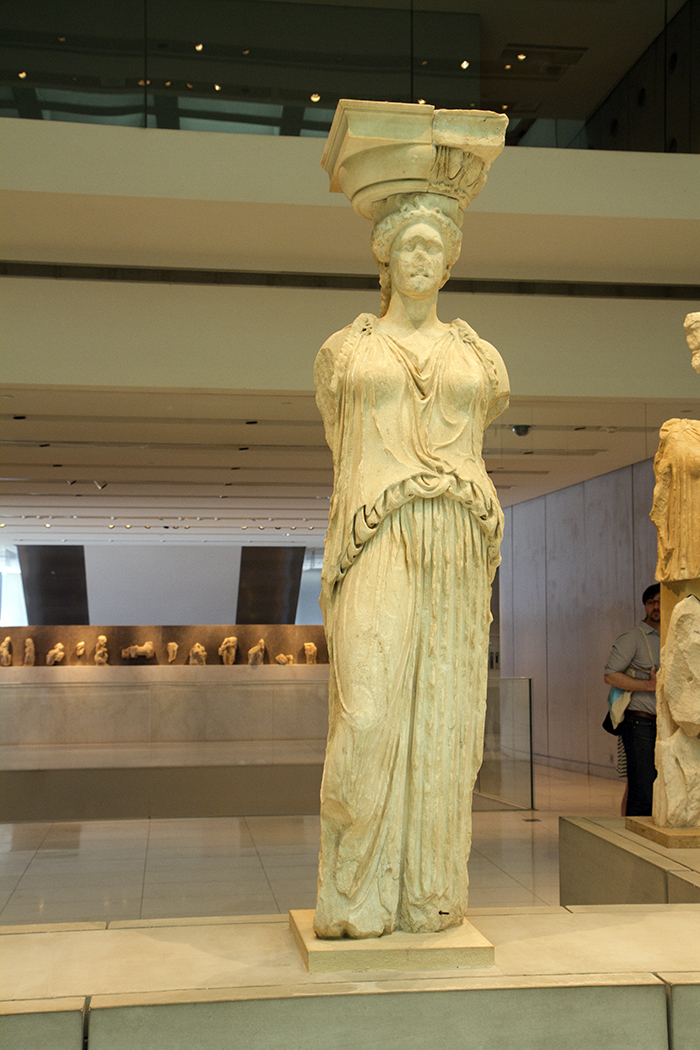
After the morning in Athens, it was time to move to the Islands. We drove to the port of Rafina and boarded the first of many ferries heading towards the island of Tinos.
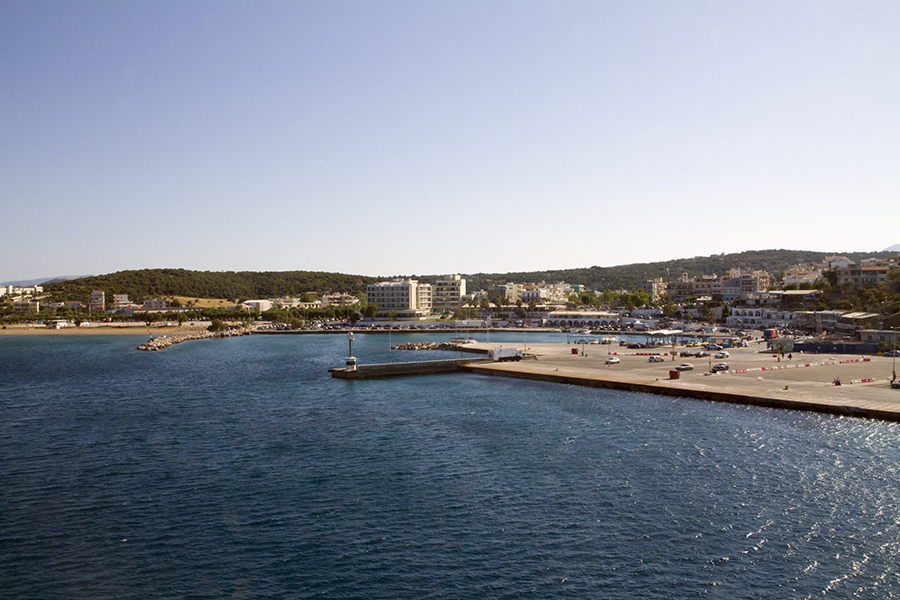
We had sunset while still underway, between Gavrios (on Andros) and Tinos (on Tinos).
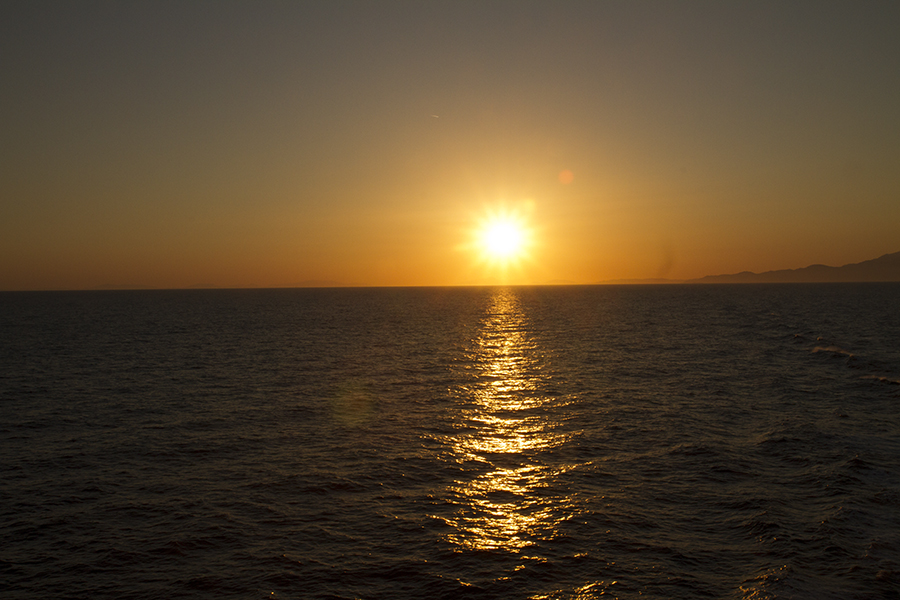
We had quite a few opportunities for sunsets on this trip, so I tried to limit the number of photos for each.
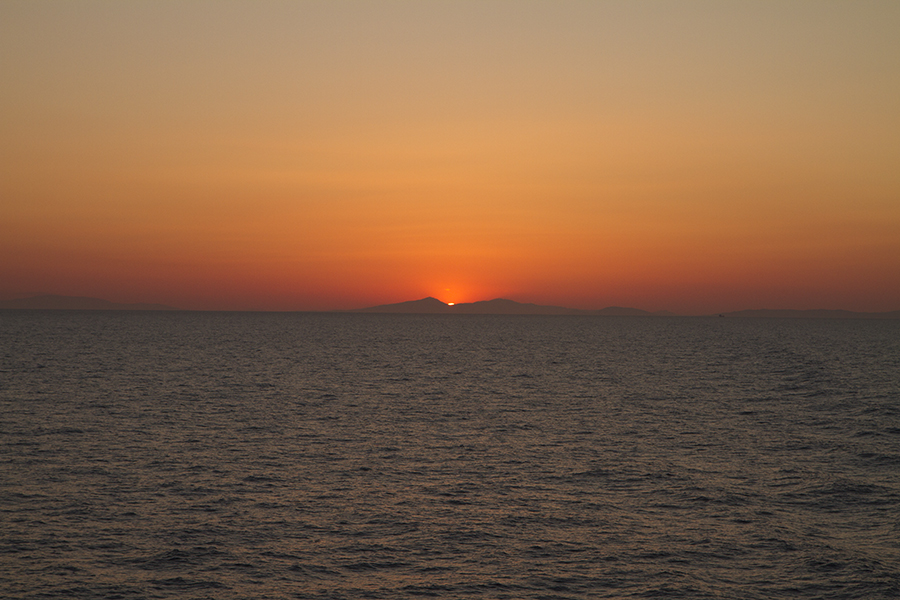
The next day and we go on our first hike. Up the hills towards Exombourgo, a Venitian fortress.
The building in the foreground is a pigeon coop, not a private house.
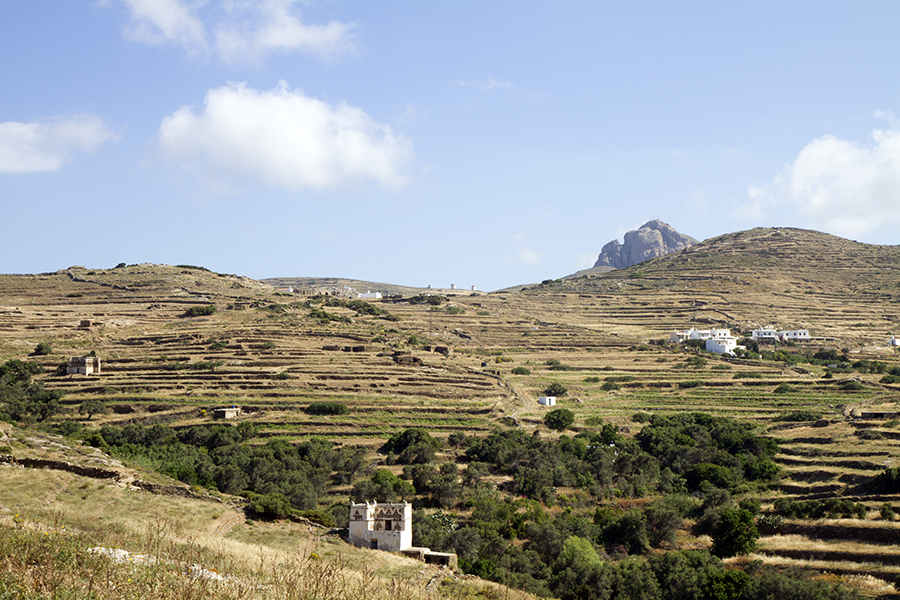
The top of the mountain is dominated by the remains of three ancient windmills which we will see better on a later hike.
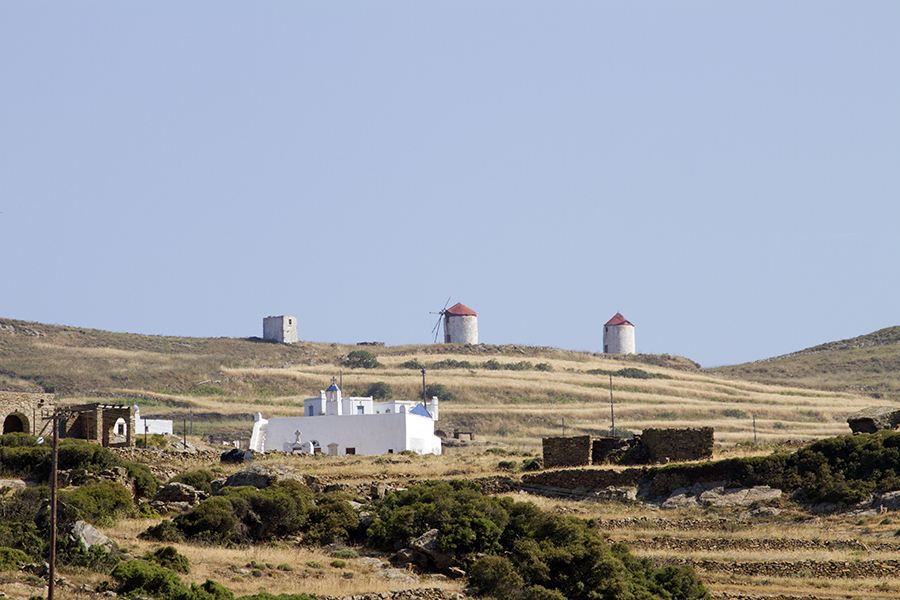
Here is a closeup of the Dovecote, or pigeon coop. These are still in use today and are protected monuments.
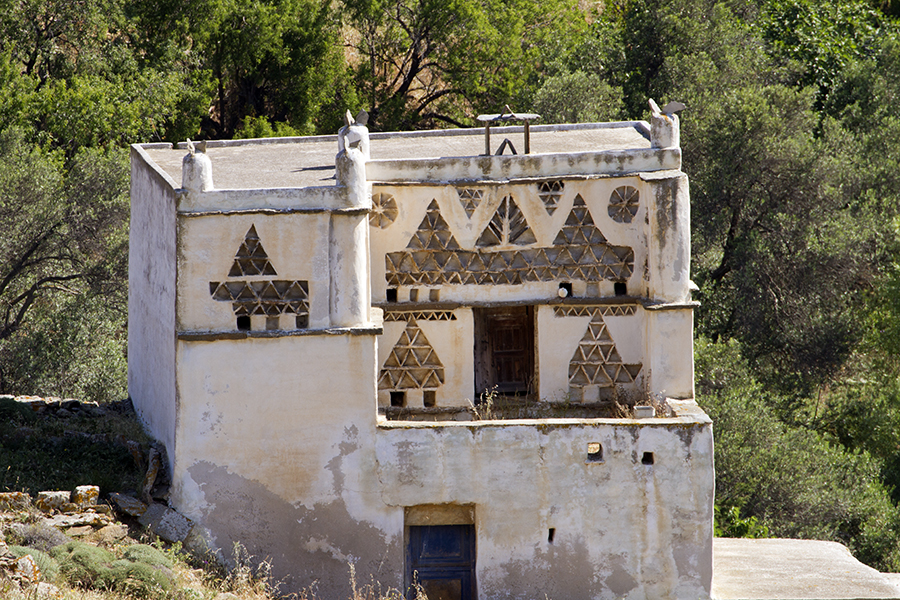
Some one in our group found this very, very small spider with a stunning backside. It appears to be some sort of Jumping Spider (Phiddipus) but not sure which sub-class as there are many and they all look similar to me.
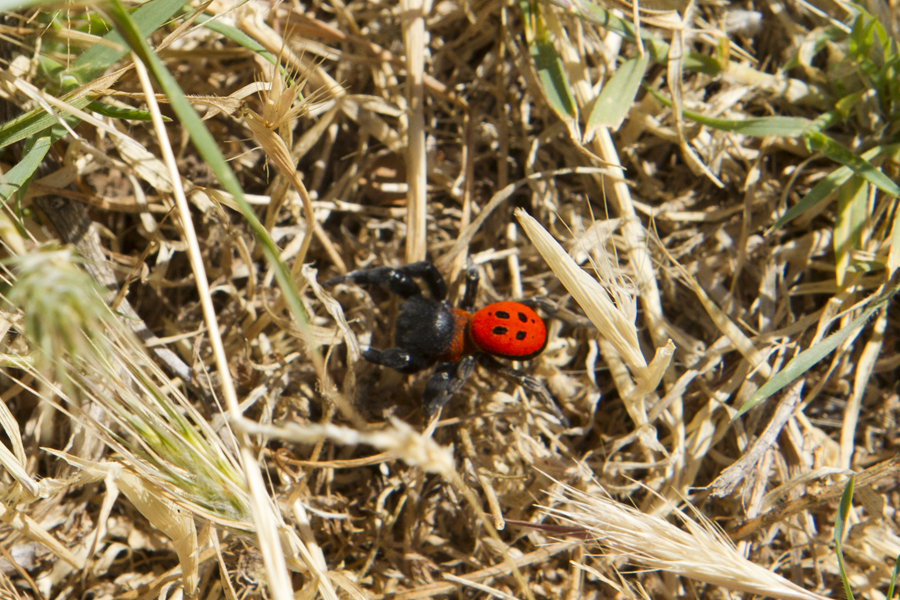
We stopped at a small chapel on the way up. A good excuse for a rest, and a group photo.
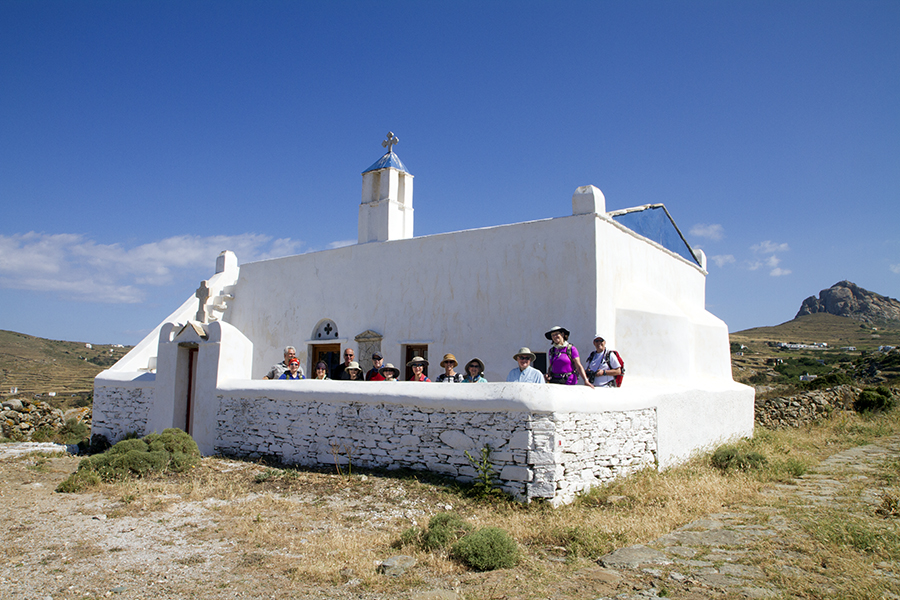
It is amazing how many small, and not so small chapels there are all over the mountains, sometimes with a few houses around, and sometimes totally isolated.
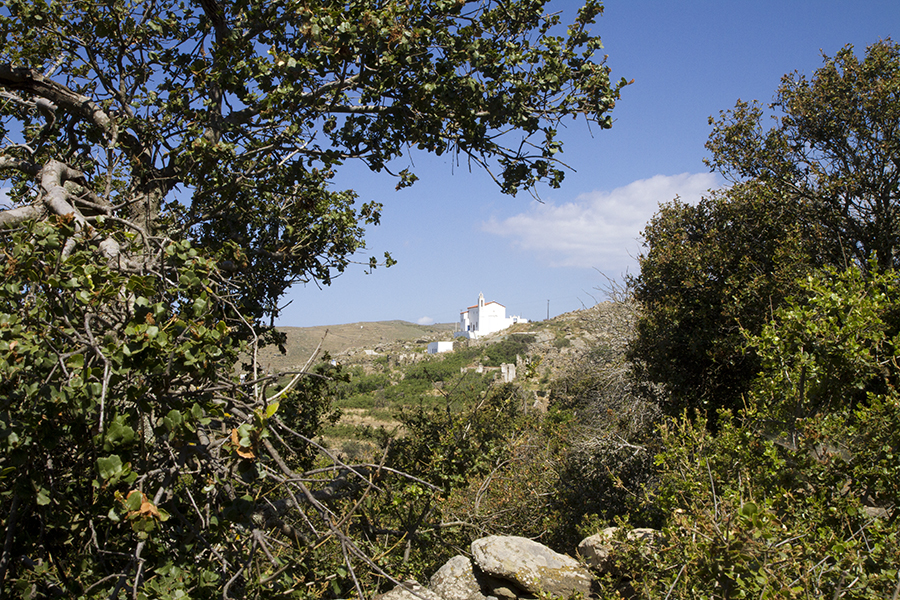
A panorama close to the top of our walk.

We had the visit of a falcon or kite, I think.
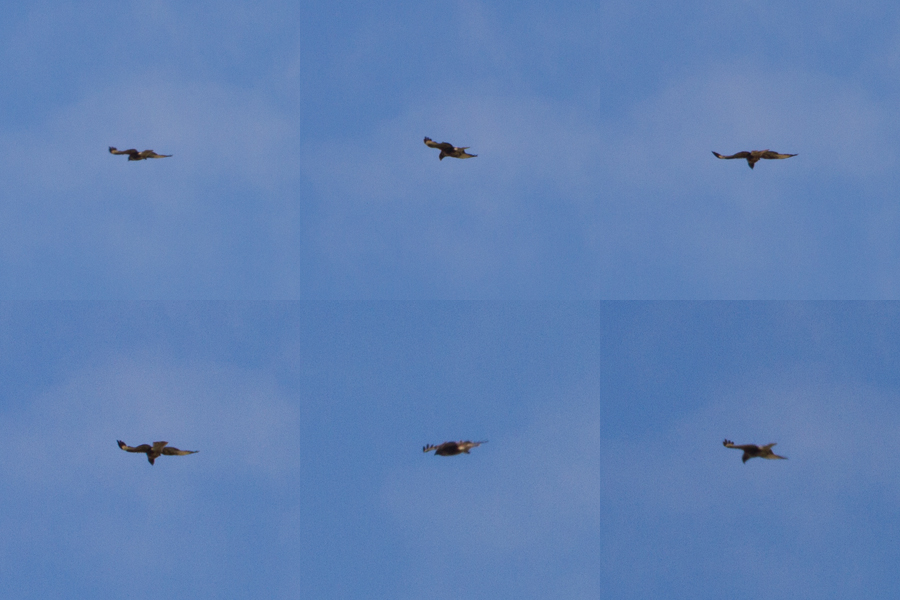
We ended up in the village of Falatados for lunch. Typical of this area are the fancy decorations on top of the windows and doors. Here is a particularly good example.

Next day, and next ferry, first to Mykonos where we spend about an hour waiting for our next transfer.
We get to walk around town and Bee and I move away from the touristy harbor to get a feel for the real town with a very nice central square.
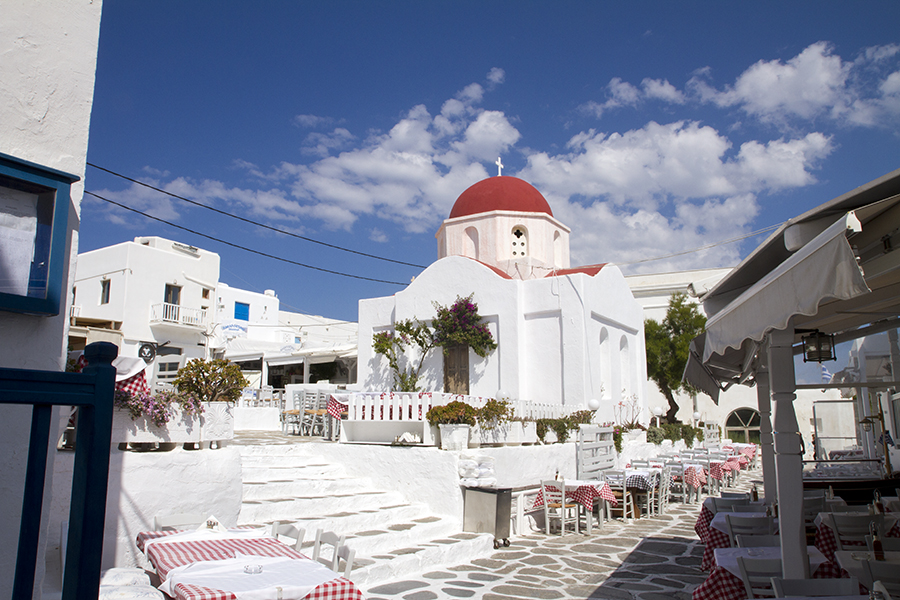
Here there are 6 windmills. Three have been renovated into holiday chalets that you can rent.

They have been very nicely restored.
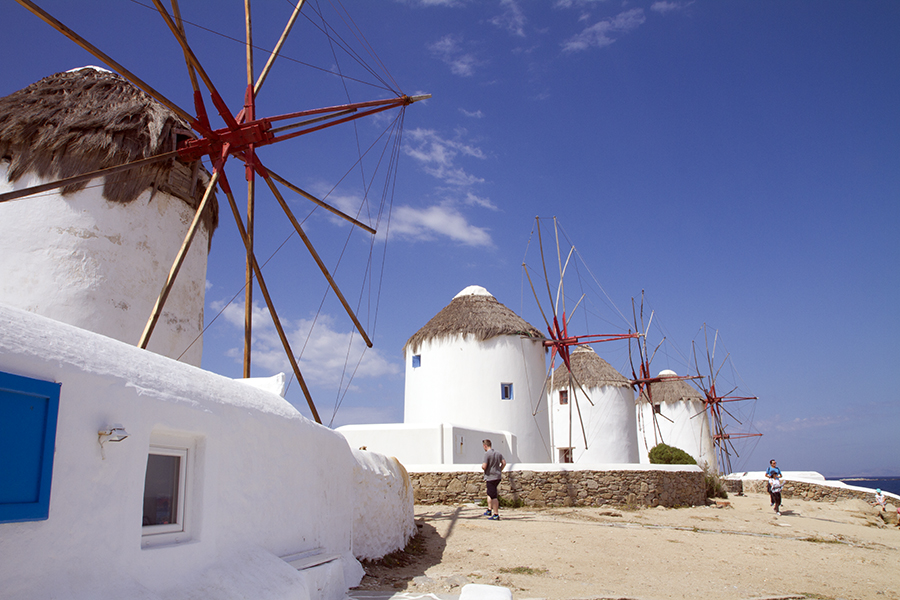
I bet these doves are having an affaire! They were smooching quite happily until they saw us and then acted as if they did not know each other 🙂
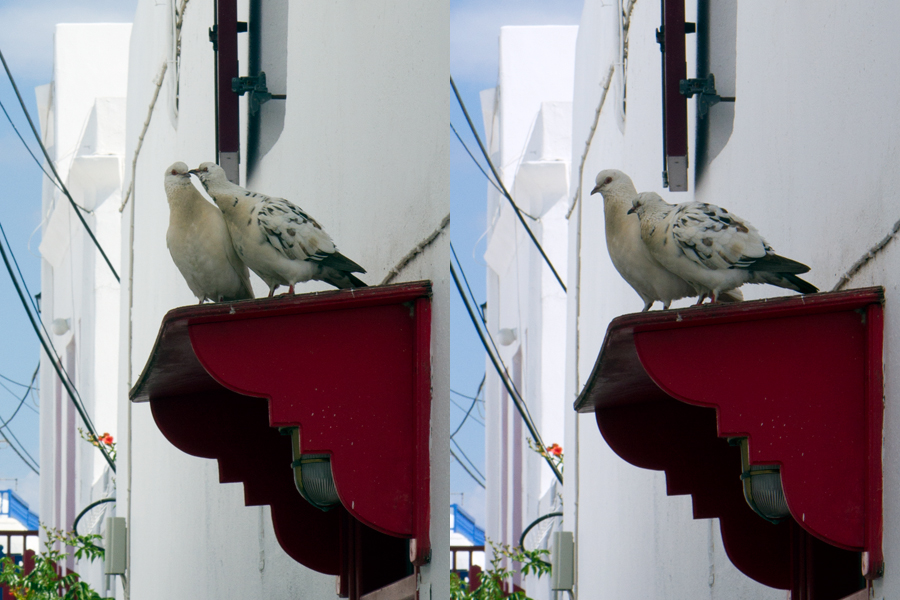
We were rescued from Mykonos by the next ferry – too many tourists!
We went to Delos, our destination for the day. Delos is a small island not far from Mykonos which was the home of a very sophisticated society in ancient Greece and is also one of the holiest sites of Greek Mythology as the birth place of Artemis and Apollo. It was an important trading post between the Greek mainland and the civilizations of the middle east and further afar.
It is also the largest archaeological development in the Mediterranean Sea, with work still on-going and new discoveries made all the time.
Many of the treasures are stores in the museum which we visited first. Top of the list are the Naxian Lions, a series of statues that lined one of the major entrance streets to the holy city. The story (in photo) of these is below.
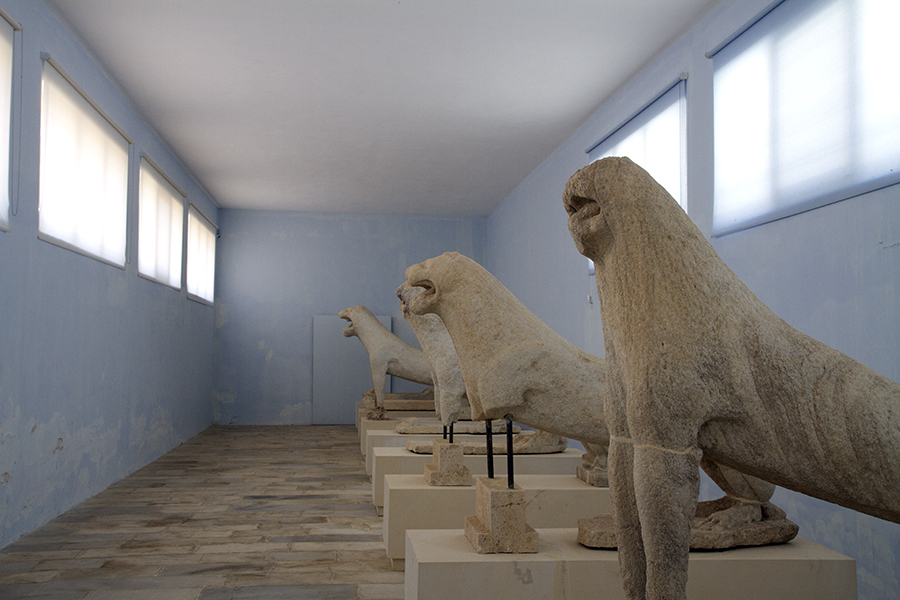

Superb head of Hermes from 430 BC.
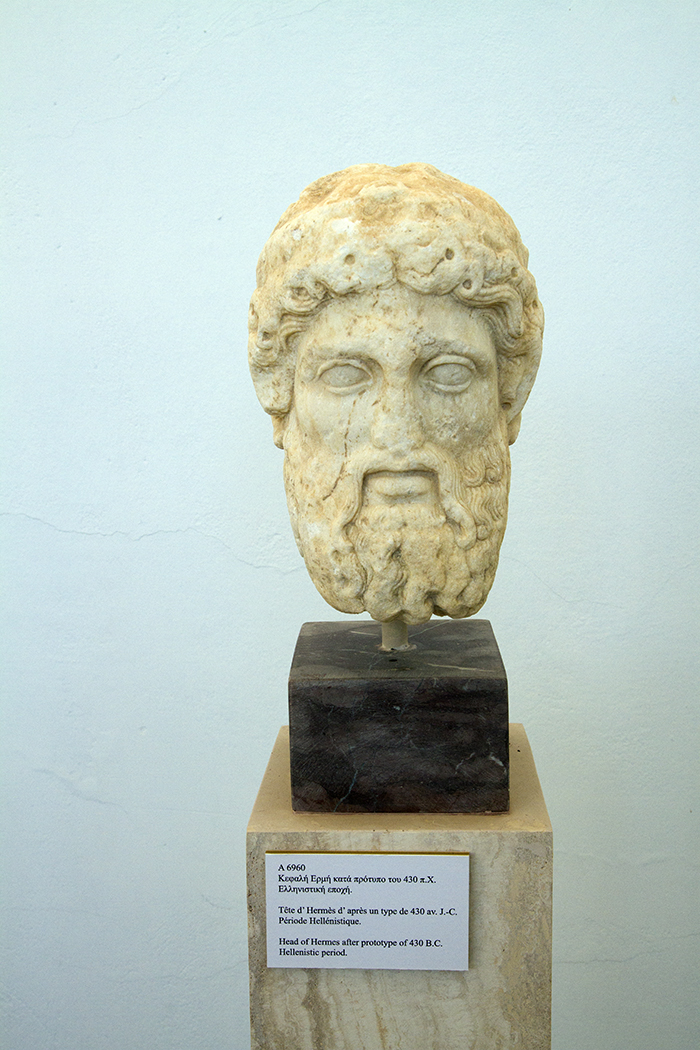
Houses were decorated with very nice paintings, some of which were found in bery good conditions.
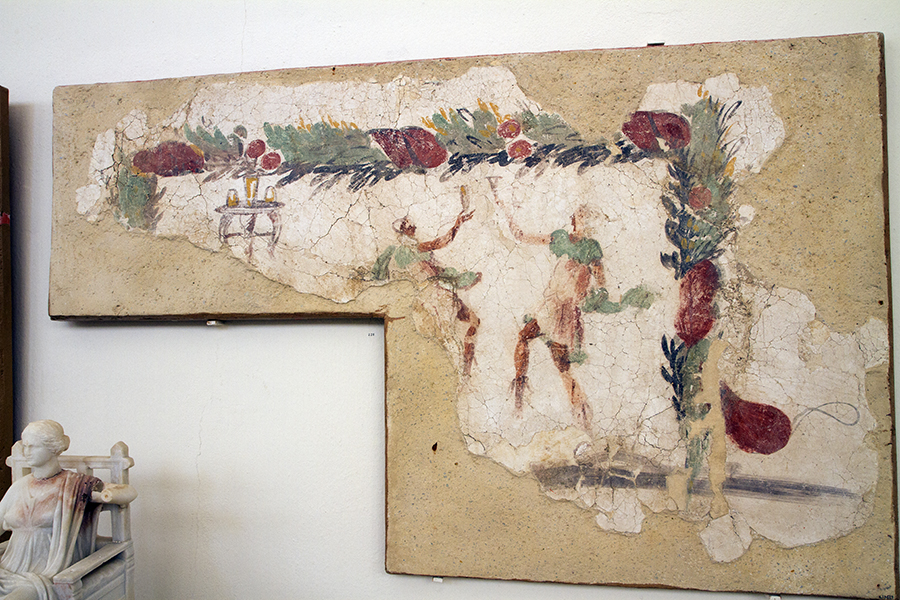
Here are copies of the Naxian Lions in their original position.

One such Lion on the side of the main street.
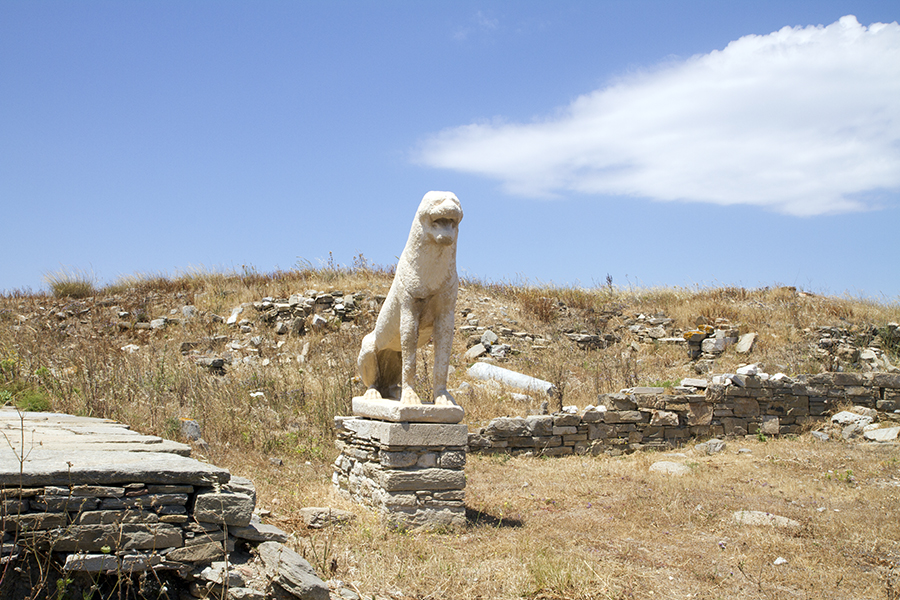
Only a very small portion of what is known to exist on the island has been excavated and restored. There are temples everywhere and until they can be protected, the best way to preserve them is as they are, still buried.
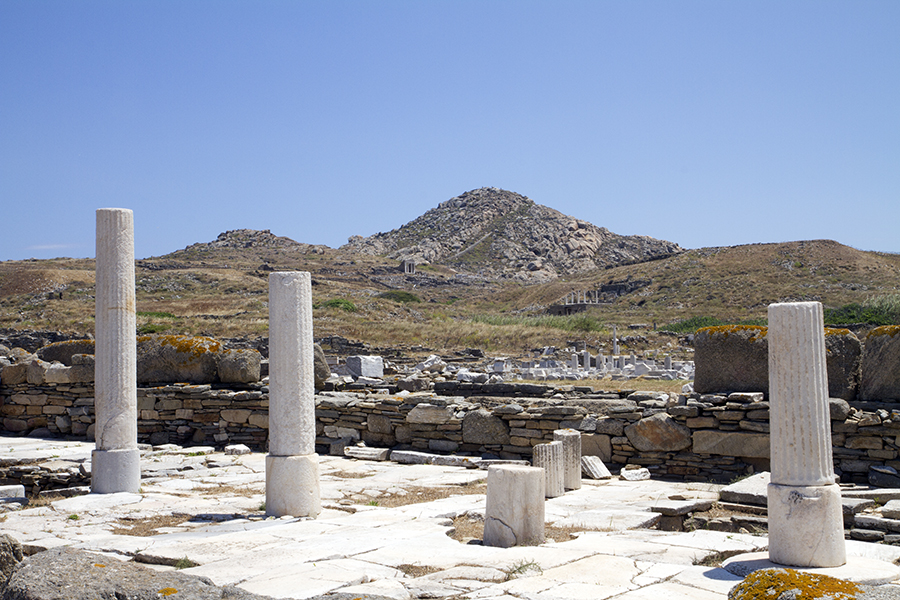
We saw another flying bird of prey – this is a falcon I believe.
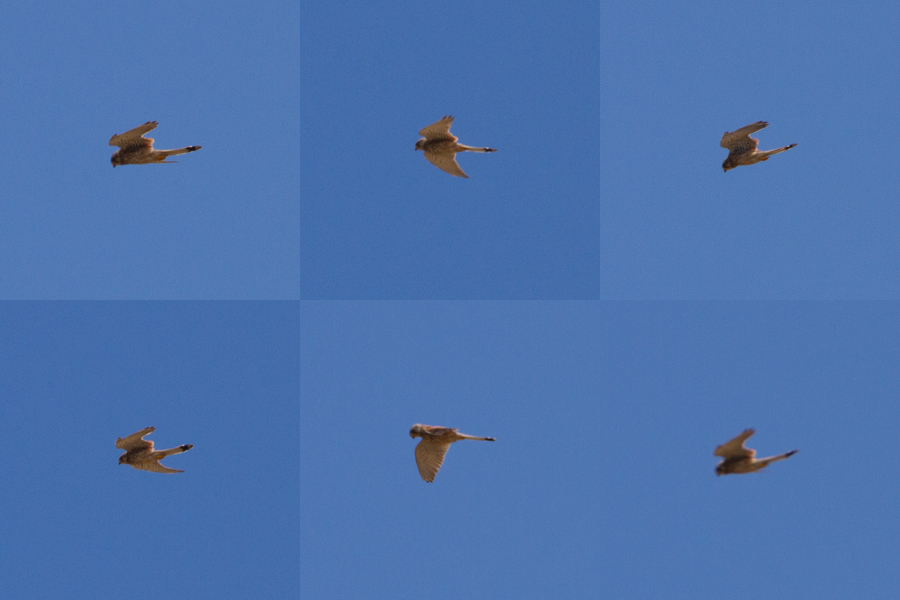
Mosaic of a tiger in a private house
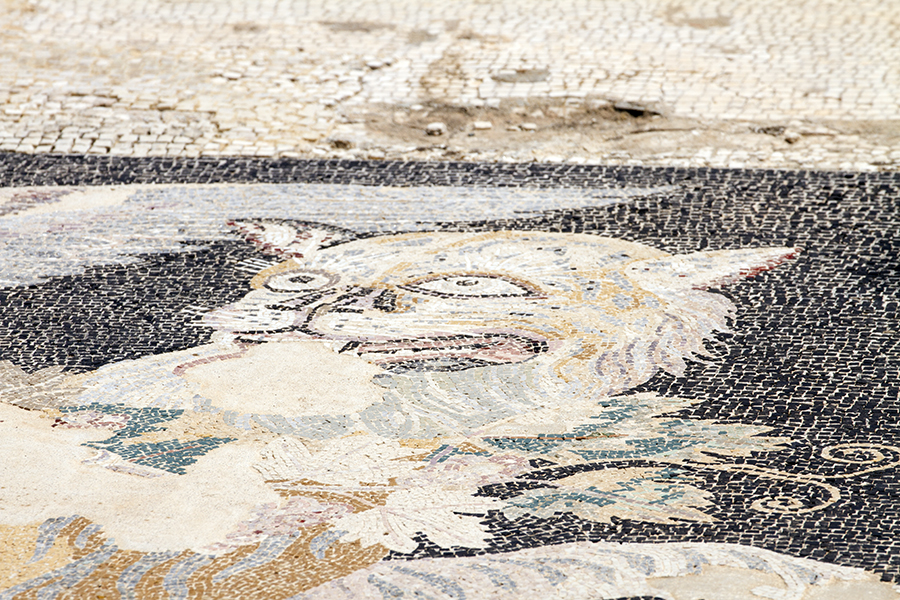
The Delos Theatre
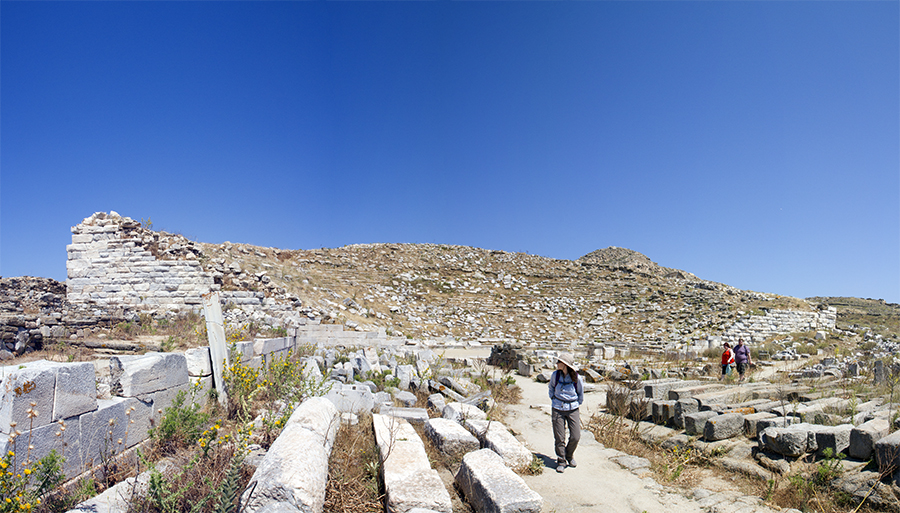
On the next day, back in Tinos, we ran into a pelican who has elected Tinos as his personal residence. It struts as if it owns the place.

We start our hike from Falatados and after a short uphill section to the wind mills, the rest is all downhill to the opposite side of the island.
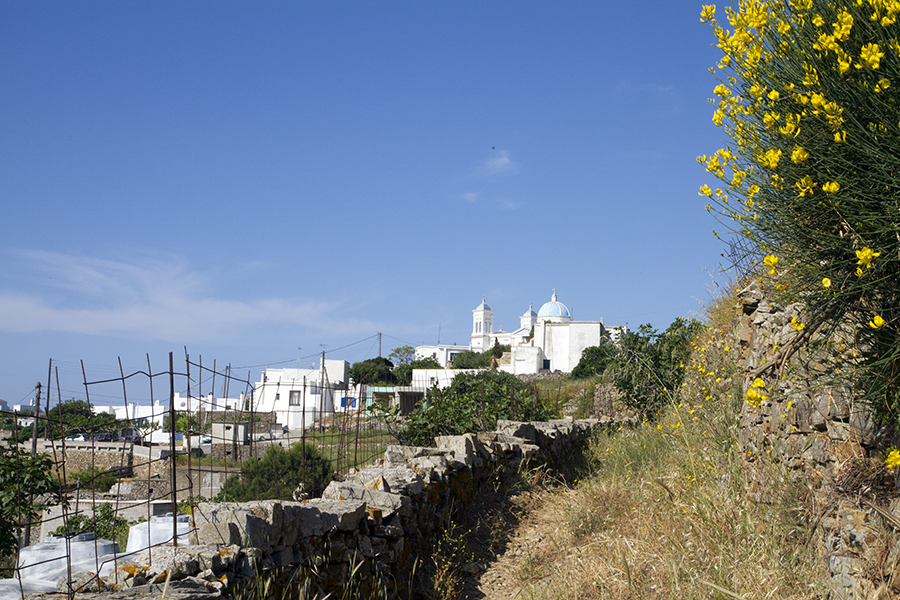
On the way, we see a house many 1000’s of years old. The roof is supported by a single column on which flat stones are piled. Not very sophisticated, but it obviously lasts…
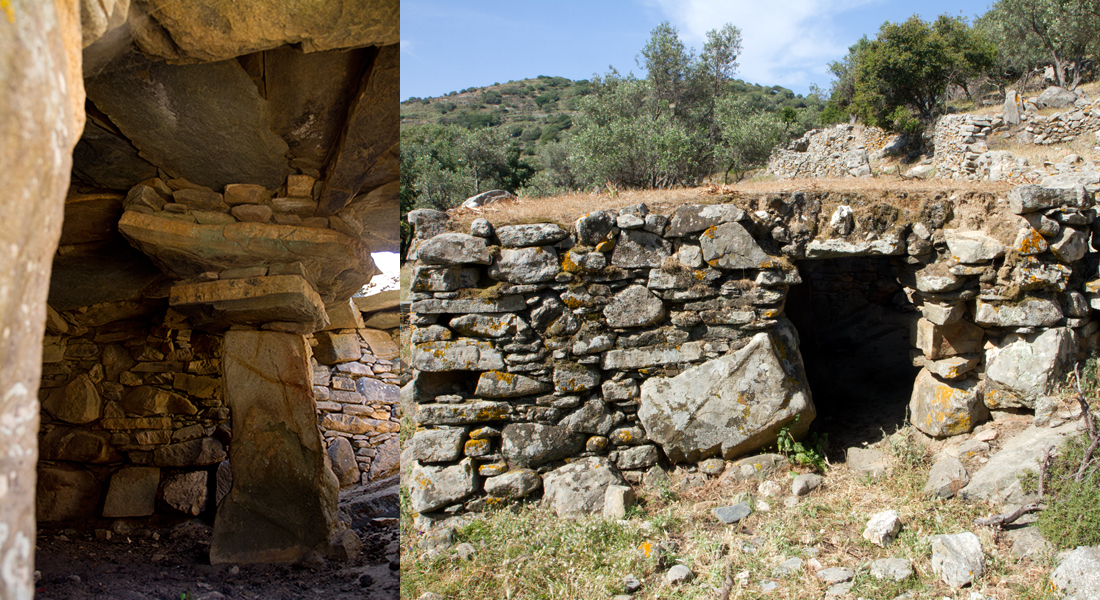
There is not a lot of vegetation, an indication that in summer, this is dry and hot! Fortunately, we are in spring and the weather is very pleasant.
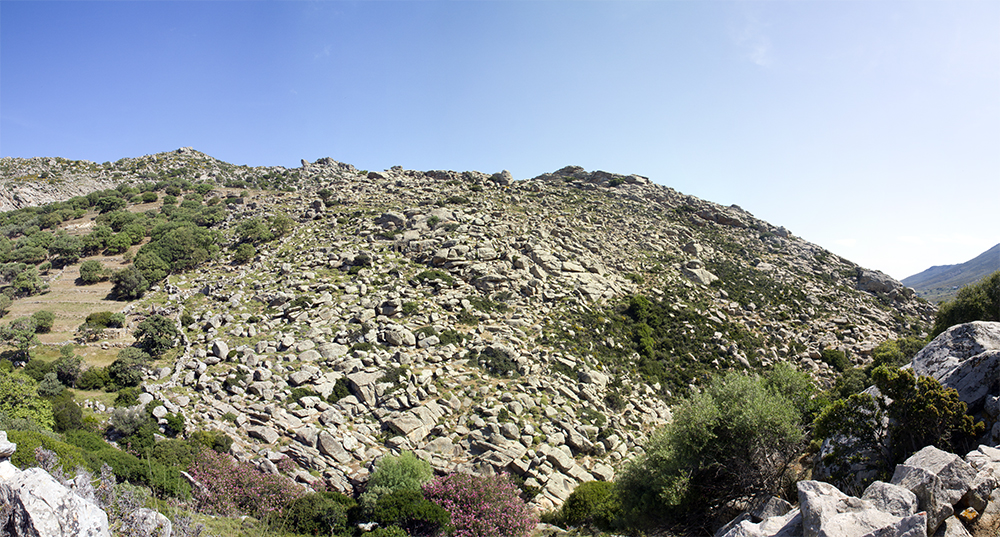
We are being carefully watched by local goats.
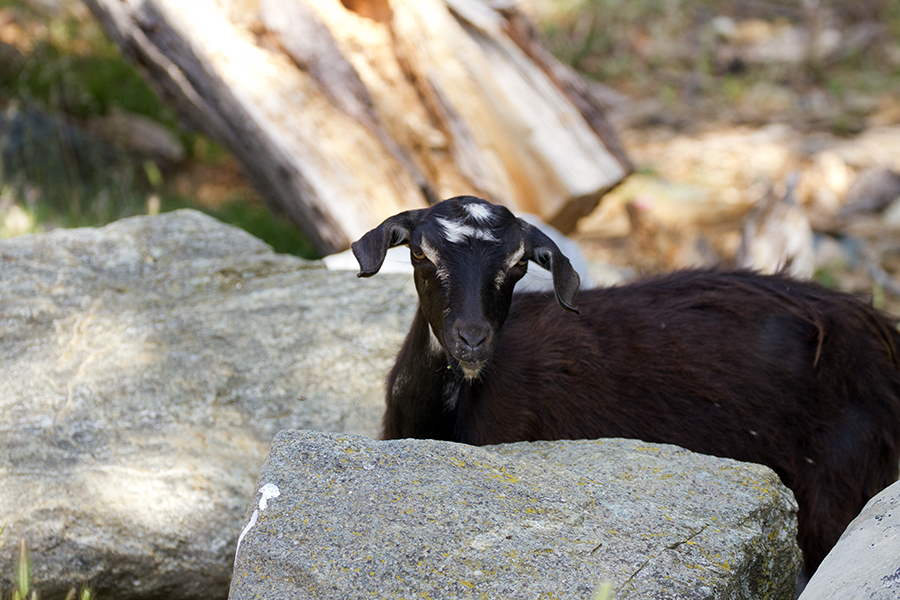
They appear to grow on trees here.

Sea turtles, or at least river turtles.
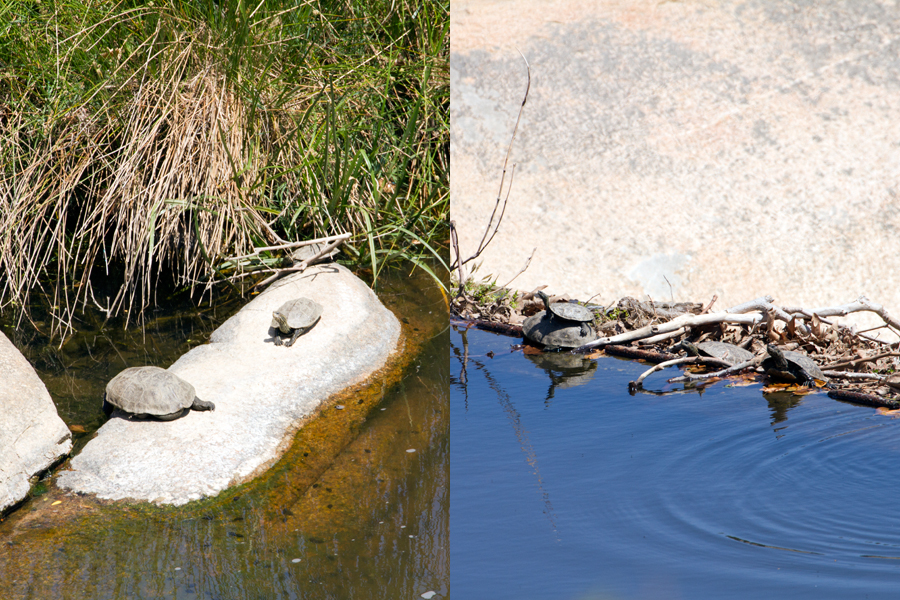
Another small chapel out in the middle of nowhere.
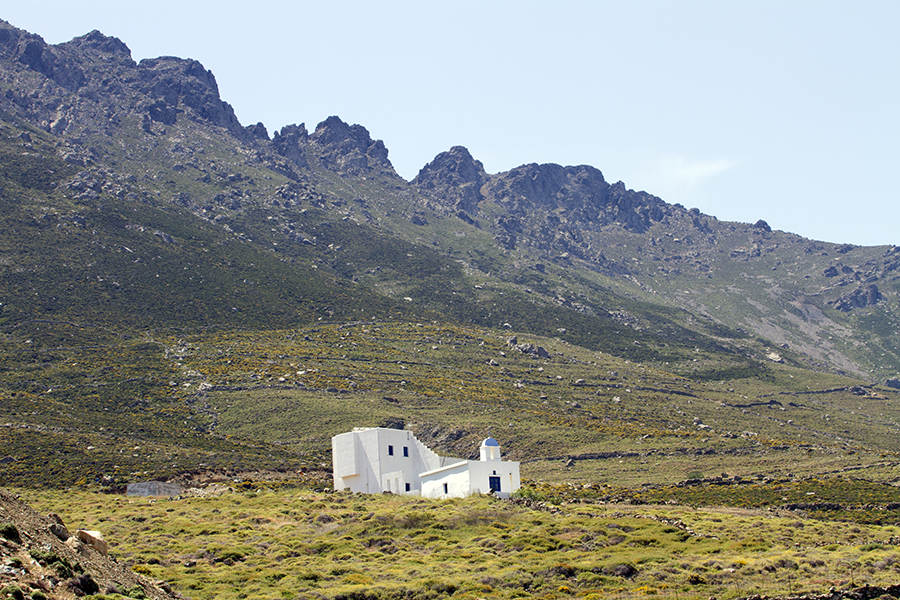
More dovecotes as we approach the sea.

After lunch, we took a bus from Mirsini back to Tinos. While we were waiting, Bee decided to visit the local laundry.
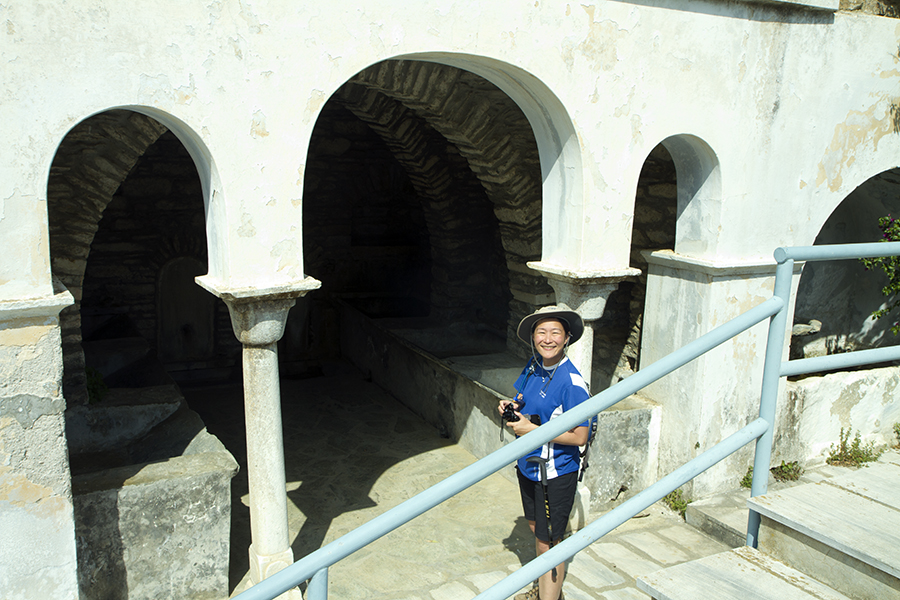
That evening, we convinced our guide not to organize dinner at 7:30 PM, which was right on top of sunset. We spent an hour enjoying the changing color of the local port. I like this one because there is the reflection of the sun in the windows and in the water.
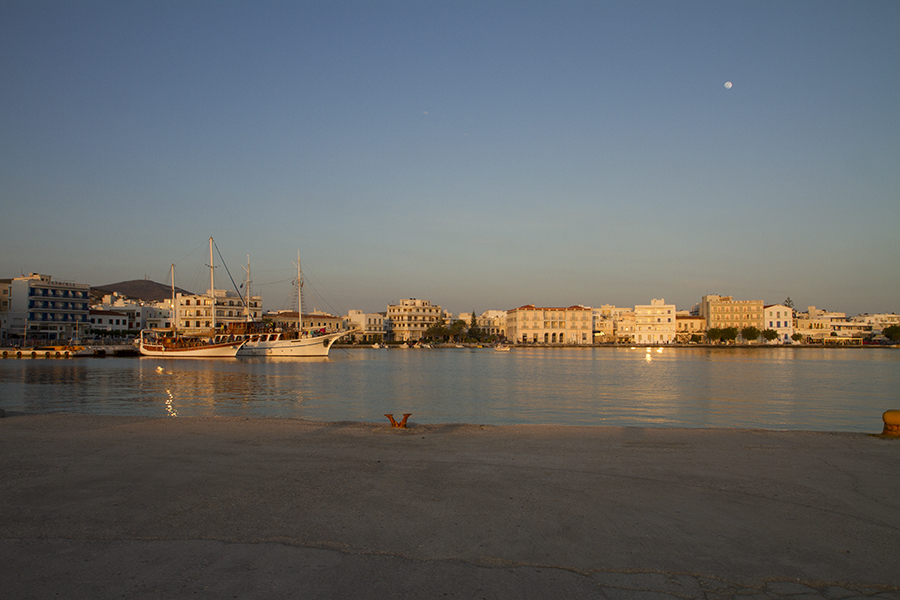
A sunset panorama of the old port in Tinos. It is full moon too!
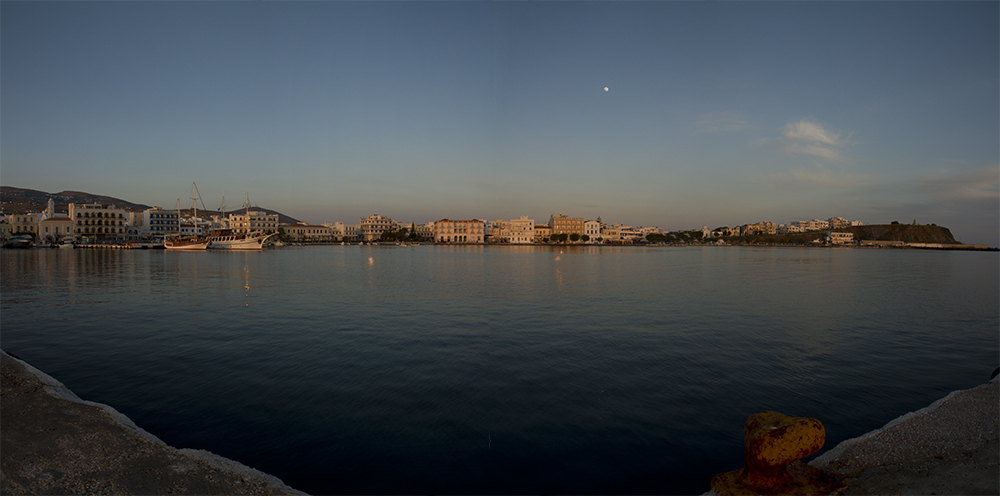
Looking the other way, the sun is setting across the new harbor, where the ferries come in.
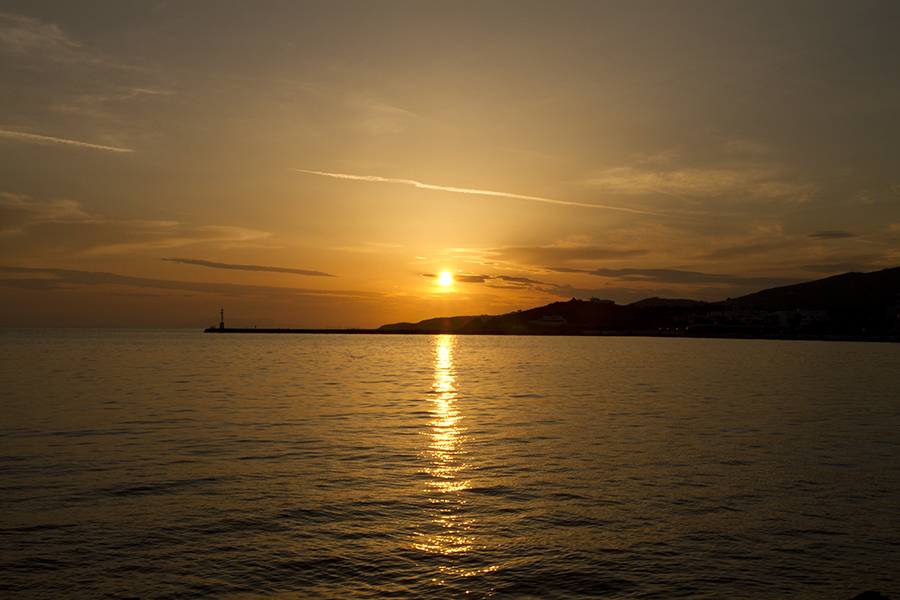
The next day, our last in Tinos, before we board our next ferry, we had a chance to visit the church of Panaghia Evangelistria, the most important pilgrimage site in all of Greece. People come here from all over Greece to thank Our Lady of Tinos for favors they have received.
For significant helps, gifts are offered to show gratitude. One of these is a silver lantern given to thank Our Lady for saving the life of several fishermen whose boat was leaking. Eventually, a large fish lodged itself into the hole and allowed them to reach port safely.
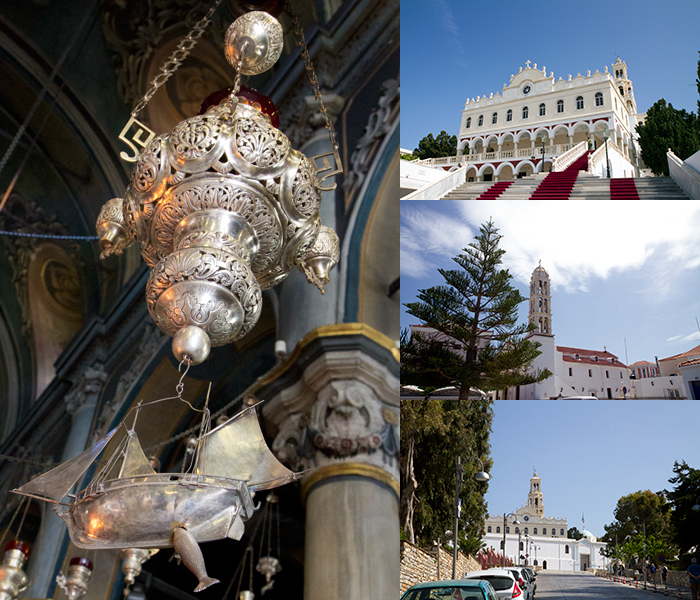
From Tinos, we took a ferry to Mykonos and then on to Naxos. That will be the subject of another post, hopefully not too far into the future.
(448 Page Views)

Lovely pictures again. Can’t get tired of sunsets.
Most Greek dad’s say “The Greeks had a word for everything.”
Now the turtles aka Slowalkas on these islands understand Greek. When we went to Delos I told the Slow Walkers to stop, turn left and right. They did it! Darlene says it might have to do with me putting my big body directly in front of them (to stop) and pointing my size 49’s to the left/right.
You are correct about the Falcons, aka Falconas. They have been displaced by many tourists/crowds. Here tell they eat olives and spit the pits on misbehaving tourists.
The spotted spider aka Spideropoullos, is rare indeed. They are often found in quiet restaurants in search of mousaka drenched in olive oil.
So it is told.